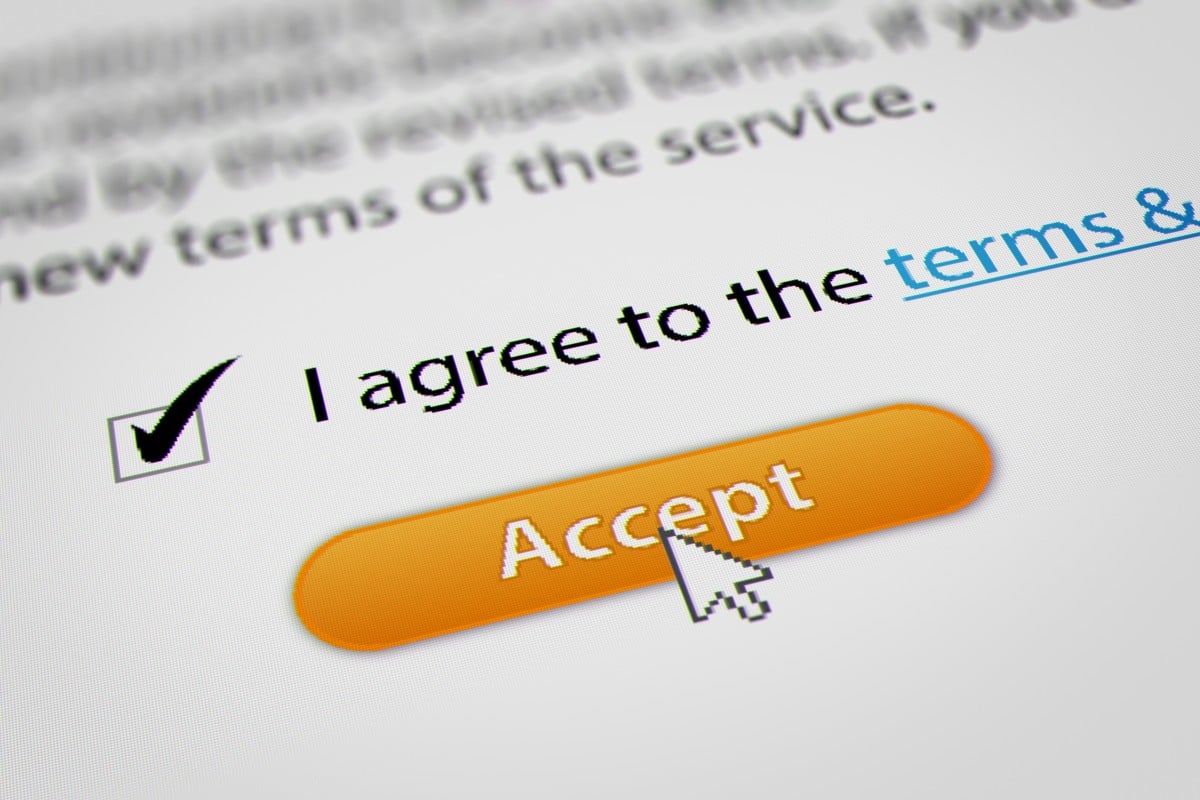We’ve all done it — downloaded an app, opened a website, and immediately hit “I Agree” to move forward. Those two words might seem harmless, but they’re actually one of the most powerful actions you take online. Behind that small button lies a long list of terms, conditions, and privacy policies that shape what companies can do with your personal data.
Let’s break down what’s really going on when you click “I Agree,” why it matters, and how to protect yourself without needing a law degree or tech expertise.
Why “I Agree” Exists
When you install software, join a platform, or sign up for a service, you’re entering into a legal agreement with the company. That’s what the “Terms of Service” or “Privacy Policy” covers.
By clicking “I Agree”, you’re saying:
- You’ve read and accepted the company’s rules.
- You give permission for how they use your data.
- You accept what happens if something goes wrong (for example, limited liability).
In other words, it’s the digital version of signing a contract.
What You’re Usually Agreeing To
While every company’s terms differ, most include a few standard sections:
1. Data Collection
Almost every app or website collects some kind of information about you. This can include:
- Your name, email address, and phone number
- Your location or device details
- How you use the app or website
- Your photos, contacts, or files (if permissions are granted)
Sometimes it’s for good reasons — like improving the service. But it’s also often used for targeted advertising or shared with third parties.
2. Data Storage and Sharing
The fine print may allow companies to store your data indefinitely or share it with “partners.”
These partners could be advertisers, analytics firms, or even data brokers who compile information for marketing or research.
That’s why you might search for “new sneakers” on one site and suddenly see sneaker ads everywhere else — your data travels fast.
3. Usage Rights
Some terms let the company use your content (like photos or reviews) for marketing or promotional purposes.
For example, when you post a photo on a social media platform, you might be granting them a license to use it publicly.
You still own your content — but the platform often has broad rights to use it.
4. Automatic Renewals and Subscriptions
Many services include clauses about automatic billing or renewal. If you don’t read carefully, you might find a charge on your card for a subscription you forgot about.
Always check how cancellations and renewals work before you agree.
5. Limited Liability
The company’s terms usually protect them if things go wrong — like data leaks, downtime, or loss of files.
By agreeing, you often give up the right to sue them directly in many cases.
Why Most People Don’t Read the Fine Print
Let’s be honest — these documents are long, boring, and full of legal jargon. Studies show that over 90% of users never read them. Some would take hours to go through line by line.
Companies know this. They rely on your need for convenience — the faster you click “I Agree,” the quicker you get to the service. But that convenience can come with invisible costs.
Real-World Consequences
- Privacy Loss – Your personal data could be used to build detailed profiles about you — what you like, where you go, who you talk to.
- Targeted Ads & Manipulation – Companies use this data to influence what you buy, watch, or even believe.
- Data Breaches – Once your data is stored somewhere, it can be hacked or leaked.
- Hidden Charges – Subscription apps can bill you after trial periods end.
You’re not powerless, though — small habits make a big difference.
How to Protect Yourself
1. Skim, Don’t Skip
You don’t have to read every word — just look for key sections:
- “How We Use Your Data”
- “Third-Party Sharing”
- “Automatic Renewal”
- “Your Rights”
Most browsers or mobile systems highlight these sections now.
2. Use “Privacy Checkups”
Major services like Google, Facebook, and Apple now offer Privacy Checkup tools. These let you review what’s being collected and adjust permissions in a few clicks.
Do it at least once every few months — it’s like a digital health checkup.
3. Limit App Permissions
When installing apps, deny permissions that seem unnecessary.
For example, a flashlight app shouldn’t need access to your contacts or camera.
4. Use Guest or Private Mode
When browsing or testing new services, use private/incognito windows. This reduces how much data websites store about you.
5. Rely on Trusted Sources
Stick to official app stores and reputable websites. Avoid downloading apps or clicking “I Agree” on suspicious pop-ups or unofficial downloads.
6. Try Privacy-Friendly Tools
Search engines like DuckDuckGo, browsers like Firefox, and email providers like ProtonMail focus on privacy and collect minimal data.
The Future of Consent
Governments are starting to act. Laws like GDPR (in Europe) and India’s Digital Personal Data Protection Act (DPDPA) require companies to explain clearly what they do with your data and get proper consent.
That’s why you now see cookie banners and privacy notices everywhere. These laws give users the right to:
- Access their data
- Delete it
- Withdraw consent anytime
But you still have to click — and care — for those rights to work.
Bottom Line
Clicking “I Agree” might feel like a harmless routine, but it’s really you signing a digital contract.
You’re giving permission — sometimes wide, sometimes narrow — for how your personal data is collected, used, and shared.
You don’t need to read every legal line, but being curious and cautious goes a long way. Learn to scan for key sections, limit permissions, and use privacy tools.
Remember: in the digital world, your data is currency — and every time you click “I Agree,” you’re deciding how much of it you’re willing to spend.
